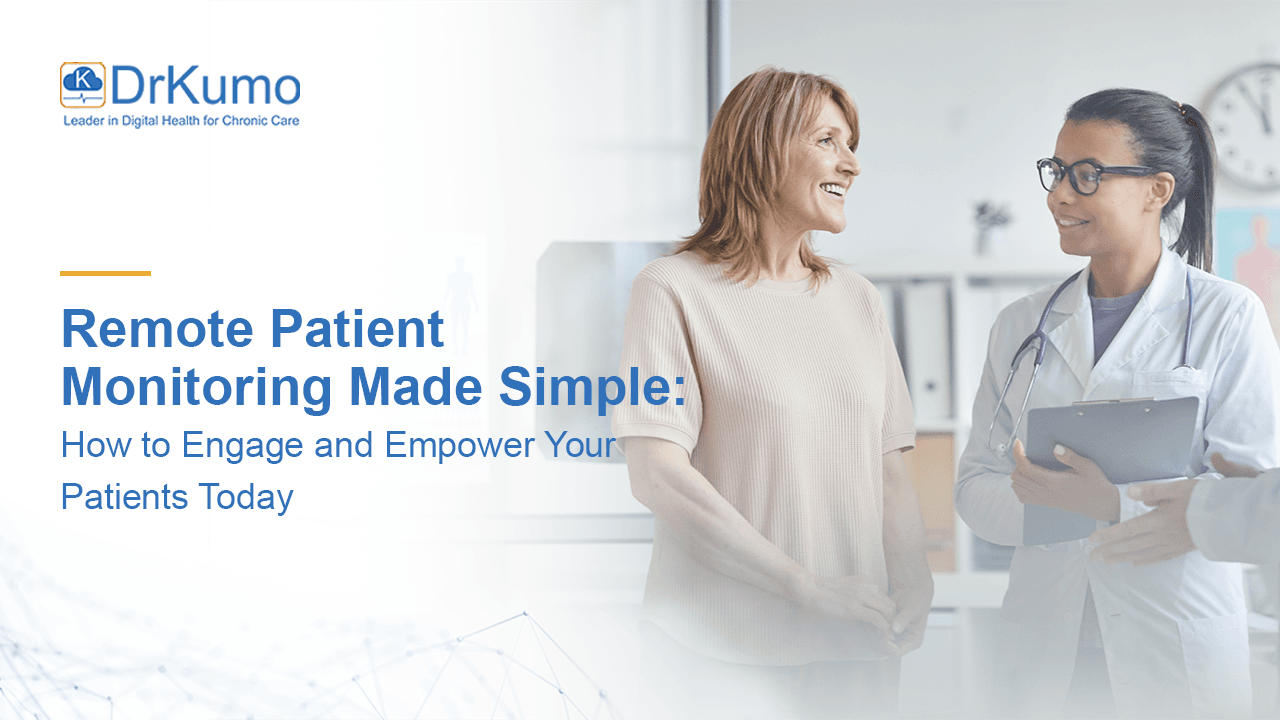What if your healthcare team could detect health issues before they escalate into emergencies—all while keeping patients comfortably at home? Remote Patient Monitoring (RPM) is an innovative solution quickly gaining prominence in modern healthcare. It enables providers to deliver proactive, data-driven care with precision and efficiency. Organizations that integrate these tools are well-positioned for the future of patient care.
What is Remote Patient Monitoring (RPM)?
Remote Patient Monitoring (RPM) refers to medical devices and digital health tools that allow healthcare providers to monitor physiologic data, such as heart rate, blood pressure, and glucose levels, from a patient’s home in real-time. This approach reduces the need for frequent in-person visits, making it essential for chronic condition management.
According to Juniper Research, global RPM users are expected to exceed 115 million by 2027, highlighting its growing importance in healthcare systems worldwide. Similarly, a report by Strategic Market Research shows that 70.6 million Americans will adopt RPM services by 2025, underscoring its rapid expansion in the U.S. market.
The Future of Remote Patient Monitoring: A New Era in Healthcare
The healthcare landscape is shifting towards connected health monitoring, integrating telehealth and continuous RPM services to improve outcomes and reduce costs. Trends like AI-powered devices that can detect early signs of health deterioration and hospital-at-home initiatives are supporting a shift toward more proactive and preventive care.
Medicare reimbursements have significantly encouraged this shift. For instance, Medicare’s Acute Hospital Care at Home Initiative extended through 2024, has boosted the adoption of RPM for acute care patients by allowing hospitals to treat them remotely. By integrating these new technologies, providers can save costs and reduce hospital readmission rates while improving patient satisfaction. A study conducted by NCBI on the cost-effectiveness of a remote patient monitoring (RPM) program that incorporated lifestyle education software for Type 2 diabetes found that the telemonitoring group experienced a trend toward a 21% reduction in costs for patients over one and two years of follow-up.
Best Practices to Engage Patients in Remote Monitoring Programs
Engaging patients is vital to the success of any remote monitoring program. Here are strategies healthcare providers can use to empower patients and ensure long-term engagement.
- Educate Patients on the Benefits of RPM Devices
Patients are willing to engage in remote monitoring programs if they understand how to improve their health and reduce hospital visits. Sharing success stories—such as reductions in chronic care admissions by up to 41%, according to Strategic Market Research can help patients appreciate the tangible benefits. Many patients need to become more familiar with digital health monitoring systems.
Educating them about the advantages of remote care technology helps them see its value and builds trust in the system.
- Explain the advantages clearly: Highlight how RPM improves health outcomes through early detection and timely interventions.
- Share success stories: Use real-world examples to demonstrate how RPM helps manage chronic conditions like hypertension and diabetes.
- Reduce fear of new technology: Explain how remote monitoring reduces the need for some in-person visits, providing patients with more flexibility in their care.
- Simplify the Use of RPM Devices and Medical Apps
Making devices user-friendly ensures higher patient adoption. Multilingual options and easy-to-use interfaces are essential for engaging a diverse patient population. Wearable technology will play a crucial role in chronic care management and RPM by providing real-time monitoring that is easy to manage from home.For RPM programs to be effective, the devices must be easy to use, allowing patients to engage with the technology without frustration.
- Offer simple instructions: Provide clear, step-by-step user manuals for wireless health monitors and home monitoring devices.
- Automate essential features: Use auto-syncing capabilities to make patient data transmission effortless.
- Support multilingual options: Ensure apps and instructions are accessible in multiple languages to accommodate diverse patient populations. Provide technical assistance: Offer training or helplines to ensure patients feel comfortable using the remote healthcare monitoring tools.
- Build Trust with Regular Communication and Feedback
Continuous interaction between providers and patients through telehealth RPM platforms fosters trust and engagement. According to Global Remote Patient Monitoring Statistics 2023, 75% of physicians across urban and rural areas now rely on RPM to monitor chronic conditions, offering regular virtual check-ins and timely care adjustments to maintain patient participation.Trust plays a crucial role in the success of remote monitoring programs. Continuous communication reassures patients that their care team is actively involved.
- Monitor physiologic data in real-time: Review patient data frequently to ensure any health issues are addressed promptly.
- Conduct virtual consultations: Use telemedicine platforms to stay connected with patients, answer questions, and provide guidance remotely.
- Provide timely feedback: Let patients know how their health data is progressing to motivate continued use of RPM devices. Adapt care plans as needed: Adjust real-time treatment based on the patient’s physiologic data to maintain engagement and improve outcomes.
How RPM Supports Chronic Disease Management
RPM plays a crucial role in the management of chronic diseases such as diabetes, hypertension, and heart disease. Here’s how:
- Remote Monitoring of Key Metrics
With RPM devices, patients and providers can continuously monitor vital signs such as blood pressure, glucose levels, and heart rate, ensuring early intervention. - Personalized Care Plans and Data-Driven Decisions
RPM allows healthcare providers to create more personalized care plans based on real-time physiologic data, leading to better management of chronic conditions and fewer health emergencies. - Reduced Burden on Healthcare Systems
By managing chronic conditions remotely, RPM reduces the need for frequent in-person visits and hospitalizations, easing the pressure on healthcare providers.
DrKumo: A Cutting-Edge RPM Solution for Modern Healthcare
DrKumo’s RPM solution offers an advanced, patient-centric approach to remote healthcare monitoring. It integrates seamlessly with RPM devices such as blood pressure monitors and glucose trackers, giving patients and providers real-time access to vital health data. DrKumo’s platform emphasizes user-friendly design, ensuring easy onboarding for patients of all ages and technical abilities.
With AI-driven analytics and automated alerts, healthcare providers using DrKumo can promptly respond to patient physiologic data changes, preventing complications and enhancing care quality. DrKumo’s telehealth RPM platform also supports seamless integration with EHR systems, enabling healthcare teams to deliver more personalized and data-informed care. Additionally, the platform aligns with Medicare reimbursement guidelines, making it an economically viable solution for healthcare providers managing large patient populations.
DrKumo empowers patients to take control of their health by providing continuous access to care from the comfort of their homes through a disease management protocol. This revolutionizes how chronic conditions are managed and improves health outcomes on a large scale.
Takeaways
Remote Patient Monitoring (RPM) revolutionizes healthcare by bridging the gap between providers and patients, enabling continuous care and improving health outcomes. Through the effective use of RPM services, telehealth monitoring, and connected health solutions, healthcare organizations can better manage chronic conditions, may reduce hospital readmissions, and enhance patient engagement. Solutions like DrKumo’s RPM platform provide the tools and support necessary to empower patients to take charge of their health while giving providers real-time data to make proactive care decisions.
Now is the time to integrate RPM technology into your healthcare strategy. Whether you are a provider looking to improve patient care or an organization aiming to align with Medicare reimbursement opportunities, DrKumo offers a comprehensive and easy-to-use platform to meet your needs.
Take the next step toward better care and improved outcomes—explore DrKumo’s RPM solution today to transform your healthcare delivery and empower your patients like never before.
Disclaimer: The information provided in this article is intended for educational purposes only and should not be considered medical advice. Always consult a qualified healthcare professional before changing your health management or treatment plan.








